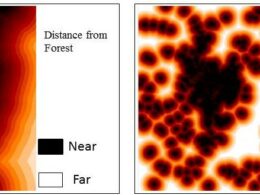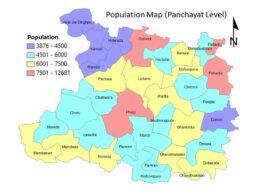How Geo-spatial Technique used for Drinking Water Quality Analysis
The GIStechniques is a best tool to assess and analyze water quality consistently and understanding the natural environment on a local and regional scale. Water quality data collection is not continuous, these samples are discretely collected, as wells location or ponds/lakes location are not continuous.
In that case GIS functions play significant role to create continuous data from these discrete data. GIS process can also incorporate spatial data as well as attribute data for further analysis.
GIS has many advantages, one of them is to integrate mathematical models for simulation and prediction.
Therefore in this article water quality for drinking purpose is discussed by including real time data analysis using GIS technique.
The available water resources are getting depleted and the water quality has deteriorated by high pollution load from dense urbanized area. As water drains from different type of land use/land cover, it may enrich with different kinds of contaminants such as runoff from agricultural lands may be enriched with nutrients and sediments.
Likewise, runoff from highly developed urban areas may be enriched with rubber fragments, heavy metals, as well as sodium and sulfate from road deicers. Increase in population, urbanization, industrialization and environmental pollution has been deteriorating the quality and quantity of local water resources.
Keeping this in view, GIS is used to assess the drinking water quality changes during 2011 to 2015 based on physio-chemical parameters to study the extent of pollution in Kota city at ward level using GIS.
The drinking water quality data during 2011 to 2015 were collected from PHED, Kota for different locations within the Kota city. The source of all the sampling locations were surface water and extensively used for used for drinking and other domestic, industrial and agriculture purposes.
Various physico-chemical parameters such as pH, turbidity, Total dissolved solids, Total hardness, Total alkalinity; Fluoride and Nitrate were assessed and their respective thematic maps were generated in GIS software to evaluate the drinking water quality at ward level during the study period.
The Spatial Analyst Tool in the GIS software was employed for interpretation of data. Inverse distance weighted (IDW) technique was used to determine the cell values using a linearly weighted combination of a set of sample points.
Fig. 1: Spatio-temporal variations in drinking water quality of Kota city during 2011- 2015 (a) pH (b) Total dissolved solids (c) Total Alkalinity
The Interpolated maps presented in Figure 1a shows the spatial distribution of pH in the study area during 2011-2015. Figure 1b shows the spatial distribution of Total Dissolved Solids (TDS) in the Kota urban area during the study period. It was found that the TDS in the water samples ranged from 174 mg/l to 850 mg/l.
The acceptable limit of TDS for drinking water is specified as 500 mg/l. High level of TDS was observed in ward 1 (576 mg/l), ward 2 (660 mg/l), ward 3 (516 mg/l), ward 5 (650 mg/l) and ward 39 (540 mg/l) in year 2011.
However in 2012, high concentration of TDS was observed in ward 2,3,4,5,23,28,52,53 (between 550mg/l – 850 mg/l). The very high concentration in ward 5 could be attributed to the discharge of untreated industrial effluent.
In the present study, the total alkalinity of all the water samples ranges from 40 mg/l to 260 mg/l. According to IS 10500 the acceptable limit of alkalinity for drinking water is 200 mg/l.
The spatial and temporal variations of Total alkalinity (Figure 1c) implies that in all the wards of Kota city the alkalinity was within desired limit except in ward 39 (210 mg/l) and ward 5 (260 mg/l) during 2011 and 2012 respectively. The fluoride ion concentrations in the study area were ranged from 0.1 to 1.5 mg/l.
The acceptable limit of fluoride is 1.0 mg/l according to drinking water standards. It is clear from the spatial distribution maps (Figure 2a) that fluoride concentration was within the specified limit during the study period except in year 2011.
Fig. 2: Spatio-temporal variations in drinking water quality of Kota city during 2011- 2015 Fluoride (b) Nitrate (c) Total Hardness
Very high concentration of fluoride ion was observed in ward 32 (1.3 mg/l) and ward (1.5 mg/l) during 2011. Nitrate ion concentration is very important in drinking water because if it exceeds 45 mg/L it causes blue babies (methamoglobinemia) in children.
All the nitrate values were found within the specified limit in all the samples during 2011 to 2015. Although the spatial distribution maps of nitrate (Figure 2b) indicates that in 2011, it reached to the maximum limit in ward 27 and 28 i.e. 45 mg/l.
The high values of nitrates may be attributed to the presence of garbage in vicinity of water source and excessive use of fertilizers in agriculture sector.
Subscribe to Our Newsletter
Get notified of the best deals on our WordPress themes.



Good to see that every prameter is in limit till 2015, current trend for 2019 should also be analysed
Chlorine also to be checked
Sumit M